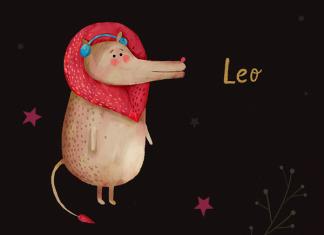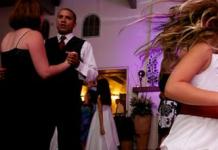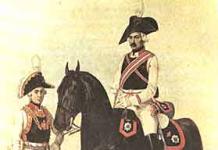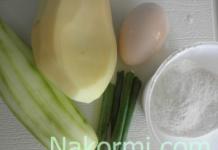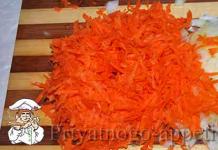The children's massage complex for a six-month-old child should already include conditioned connections that are developed on the basis of reflexes: conditioned and unconditioned. These can be visual signals (rings, sticks), light pulling on the legs and speech signals (here, give it, take a toy or stick, stomp, sit down, etc.).
Children 6 months of age are taught to stand without support, sit down and squat, walk on all fours, bend tensely while sitting on their mother’s lap, bend and straighten their torso.
Parents should set the same time for massage and exercises, take into account the child’s mood and his reaction to massage and exercise therapy. Children should not be overtired to avoid hysterics during the massage complex. The load increases gradually. There should be quiet, cheerful music playing in the room. Calm children are surrounded by contrasting and bright colors, whiny and restless children are surrounded by blue and light green. This could be curtains, clothes, toys, bed linen. Extraneous loud noises and the presence of strangers are excluded.
Massage technique
For a child 6 months and older, exercises are introduced for the small muscles of the hand, for the large muscles of all extremities, and coordination movements are complicated. A six-month-old baby has been holding his body in certain positions for a long time, sitting without support, standing with support, standing with support, crawling. He begins to understand his mother’s speech, so during the massage procedure it is recommended to facilitate this with speech signals.
The massage and exercise therapy procedure is performed in a certain sequence:
- carry out a grasping movement with the hands, using speech, rings;
- bend and unbend arms and legs, using verbal instructions. Movements – stroking and rubbing;
- turn from the supine position onto the stomach to the right (by the legs), using verbal instructions;
- perform a back massage with all movements;
- support both arms and help the child sit down using a verbal command;
- perform circular movements with your hands;
- raise the baby's straight legs with a verbal command;
- for bending, a reflex movement along the spine is used;
- turn the child from back to stomach to the left, using verbal instructions;
- holding the arms, from a position lying on the tummy, lift a six-month-old child using a speech command;
- for the arm flexors, a sitting exercise is performed using a verbal command;
- massage the chest and abdomen using all techniques, including vibration;
- carry out breathing exercises when squeezing the chest while exhaling from the sides.
The child is stimulated to crawl, muscles are strengthened for standing and sitting. Massage precedes exercise.
How to massage your hands
The baby lies on his back with his legs facing the massage therapist. To make it more comfortable to hold the child’s hand, let him grab the thumb, then carefully cover the wrist with the fingers: the ring and little fingers. With the other hand, they stroke the inner and outer surface of the child’s hand, dosing the pressure. The massage is performed from the hand towards the shoulder, repeating 4-5 times.
In the same initial position and direction, rub the handle in a spiral shape with the tips and fingers, pressing lightly and repeating 4-5 times.

How to massage your feet
In the same initial position, the feet of a 6-month-old child are alternately fixed on the palm, the leg is slightly bent at the knee. Foot massage is carried out by stroking from toes to heel (up to 8 times), vigorous circular rubbing with fingertips.
Next, the massage is continued by rubbing and kneading the legs from the back and outer sides and the thighs from the back and front. Rub using circular translational movements with your fingers, directing them from the feet to the hip joint. In the same direction, knead the muscles with a slight “squeeze”, moving in spiral movements. Repeat up to 6 times.
How to massage your stomach
In the same starting position, begin abdominal massage in 6-month-old children with circular stroking as food moves through the intestines (clockwise) using the end phalanges of the fingers. An alternative to a circular massage is a triangle massage. To do this, use the back surface of the right fingers to stroke the abdomen from bottom to top from the border of the pubis to the right arch of the ribs. Then the hand is moved horizontally from it to the left arch of the ribs. Here, unfold the hand and stroke the abdominal wall from the left side from top to bottom (towards the pubis from the ribs). Repeat up to 5 times.
For a 6-month-old child, counter massage movements of the abdomen are performed. With the right palm, stroke the left half of the abdomen from bottom to top and with the left hand (back side) at the same time stroke the right half of the abdomen - from top to bottom, repeating up to 5 times.
Next, for a 6-month-old child, spiral rubbing is performed with the fingertips from the center to the sides along the abdominal wall in front, then both hands are moved straight from the pubis to the arches of the ribs until slight hyperemia appears. The duration of the abdominal massage is up to 10 minutes. Course – 10 procedures.

- Training on all fours
With the baby on his stomach, the massage therapist places his hand under his chest. The second hand is used to bend the legs at the knee and hip joints. The assistant presses the baby’s outstretched palms to the surface of the table, shoulder-width apart, fixing the pose for one minute. Then they are taught to crawl on all fours, just like on their stomach.
- Strengthening the vestibular apparatus
With the help of rotation, it is recommended to strengthen the vestibular apparatus and autonomic nervous system. To do this, carefully place a diaper on the “Grace” or “Health” discs, folding them without edges. To prevent it from “chewing” when the disk rotates. A basin of the required size is placed on top, a blanket is laid out in it and the child is placed in the basin, reclining. The basin is rotated without jolts, smoothly and slowly for half a minute. When a baby stops, the apples of his eyes should always oscillate horizontally. When the movement is completed eyeballs, the basin needs to be rotated in the opposite direction. The movement time is gradually increased to 5 minutes.
- Reflex exercises
Reflex exercises are necessary to strengthen the muscles of the neck and trunk and use them for unconditioned motor reflex movements. By irritating the muscle receptors, the nerve apparatus and the skin, they achieve the appearance of innate motor reflex reactions: tilting the head back in weight, bending the entire body into an upwardly open arc. These movements are an energetic stimulus that strengthens the vestibular apparatus.
Therefore, from the age of 4 months, the child is often held in a suspended position on his back or on his stomach in order to strengthen the muscles of the trunk and neck.
- Passive-active exercises
Parents can help their child perform some of the movements on their own. He is able to squat, pulling himself up by his arms or hands, stand while being supported by his armpits, etc. Such active exercises should be accompanied by games and voice instructions.
Massage for a 6 month old baby - video
- this is an important stage in the development of the baby, and it is important because the baby moves from a horizontal position to a vertical one - he begins to sit.
Many babies begin to crawl at 6 months; this is a very good indicator of the child’s physical development.. If your baby is not yet crawling or sitting, then you need to strengthen your back and abdominal muscles. The baby needs to be involved in gymnastic exercises and massage, it’s good if you can turn them into. The child is especially attracted by the mother’s affectionate voice, funny nursery rhymes, and songs. It will be .
At 6 months, babies begin to pronounce simple syllables: ma-ma, pa-pa, ba-ba, dy-dya, etc.. The more you talk to your child, the sooner and more correctly he will speak. During this time, paint your lips brightly and clearly pronounce the words of the songs and rhymes that you sing and tell to your baby, he will carefully watch your lips and try to imitate your movements. Another way to communicate with your baby is to clearly repeat the sounds he makes.
A set of exercises for a 6 month old baby:
1. We start the complex, as usual, with a hand massage. First we perform stroking, and then alternate rubbing, felting and tong-like kneading with them. We finish the exercise with stroking again.
2. Bringing and spreading hands. We complicate the early exercise known to us by the fact that instead of our hands, we invite the baby to grab rings or rattles with a round handle and spread the child’s arms to the sides, also holding the rattles. Perform 8 vigorous movements.
3. Leg bending at the knees, do 6 curls of both legs at the same time, and then 6 alternately, bicycle.
4. Now ask your baby to roll over onto his tummy and massage your back and buttocks. Use the techniques of stroking, rubbing, sawing, effleurage, and pinching. Don't forget to alternate them with gentle stroking.
5. Crawl. If your baby hasn't crawled yet, you can help him by doing this exercise. When the baby is lying on his stomach, take the baby by the heels, so that your big toe is between his feet, and bend the baby’s legs at the knees, then straighten them. When the baby understands what's what, he will crawl on his own. Encourage your child to be on all fours. If he has already learned to take this position, then show him how to alternately rearrange his arms and legs in order to move around and reach his favorite toys.
6. Abdominal massage. Starts with circular stroking, then we perform sawing along the rectus and oblique muscles, stroking and finish the massage with pinching movements in the navel area.
7. Sitting down. From a position on all fours, as if crawling, hold the baby’s knees with one hand, hold the baby’s hand with the other hand and pull him to the side and up so that the baby sits, as if on his side. Perform 2 of these squats to start. When the child masters this exercise on his own, ask him to do it on his own.
8. Straight leg raises. To perform the exercise, hold the child's leg at the knee area so that it is straightened. You can perform joint and alternate lifts 6 times.
9. Raising the torso. Performed from a position lying on your stomach. Take the baby by the arms so that he clasps your fingers, then spread them apart and lift them up, pulling the baby up. The baby will throw his head up, his heels will rest on your legs, lift the baby like this. For him to sit on his knees. Do the exercise 2-3 times.
10. Chest massage. Start with stroking, then perform vibration movements and stroke again.
11. Sitting down from a supine position. The technique of doing it differs from the exercise that you did before only in that now you don’t have to hold the baby’s hands, but you need to put rings in them, which he will grab onto, and you will pull the child up by these rings.
Massage for a 6 month old baby - video:
A set of exercises for a 5-6 month old baby. Wellness and strengthening massage For infants. We do it ourselves, at home.
In a child aged 5-6 months, skeletal muscles quickly develop, which creates the preconditions for the occurrence of independent movement of the body in space. It is necessary to include passive-active exercises in the massage. Classes for children of this age are carried out in the following sequences.
- Alternate extension and bending of the arms - “boxing”.
- Alternating straight leg raises.
- Transition to a sitting position while fixing the lower limbs.
- Turn from back to stomach right and left.
- Raising and moving the shoulders back.
- Flexion and extension of the legs alternately.
- Alternately raising straight arms.
- Sliding steps.
- Crawling for a toy.
- Foot and hand massage.
Before starting gymnastic exercises and massage, the mother must prepare the table, remove all jewelry and watches from her hands, and wash her hands with warm water and soap. The child must be carefully undressed and placed on the massage table. Then they gradually begin to move, all the while talking to the baby.
The mother's hands should be warm.
1. Alternate extension and bending of the arms - “boxing”.
The child lies on his back. He is allowed to grab the mother's thumbs or rings, then the arms are bent and unbent alternately, while slightly holding the child's hands. Performed 6-8 times.
2. Alternating straight leg raises.
The baby lies on his back, legs are straightened at the knees. Grabbing the shin of the right leg, the left one is fixed. Next, alternately raise the legs to a right angle at the hip joint. Perform 4-6 times with each leg.
3. Transition in a sitting position.
The child lies on his back, with his feet facing his mother. The mother places her thumb in the baby's palm; with the other hand she should hold his hips. Holding the child's hand with her hand, the mother slightly pulls the child towards her, encouraging her to sit down. Then he carefully places the child on his back. Repeat 3-4 times.
4. Turn from back to stomach.
The child lies on his back with his feet facing his mother. Grasping the child's hand with her left hand, the mother brings her right hand under the shins from below, placing the index finger between the closed shins. Helping the turn with a slight pull by the hand, the mother ensures that the child himself completes the turn onto his stomach. When turning to the opposite side, the position of the mother's hands changes. Repeat 1-2 times.
5. Raising and moving the shoulders back.
The massage is performed with support from the shoulders. The child lies on his stomach, his arms are laid along his body. Wrapping her arms around the baby's shoulders and lightly pressing them to her chest, the mother lifts him up. At the same time, the child independently raises his head and moves his shoulders back. Repeat 4-6 times.
6. Alternating leg curls.
The child lies on his back. Grabbing the shins (index fingers on top), alternately bend and straighten the legs, imitating the movements of a “cyclist”. Perform 6-8 times.
7. Sliding steps.
The child lies on his back, legs bent at the knees, feet resting on the table. Holding the baby by the shins, the mother makes sliding movements with her feet alternately on the surface of the table. Perform 8-10 times.
8. Alternately raising straight arms.
The child lies on his back, arms along the body. The mother, grasping the child's hands, slowly raises the straightened arm forward and up to contact with the table and returns it to its original position. Changing the position of the hands, the exercise is repeated 6-8 times.
9 . Crawling for a toy.
The child lies on his stomach. The mother, placing a toy in front of the child, encourages him to crawl, while lightly supporting the soles of his feet with his hand. Repeat 4-6 times.
10. Foot and hand massage
(
Massage for a 6 month old baby
At 6 months, babies begin to pronounce simple syllables: ma-ma, pa-pa, ba-ba, dy-dya, etc.. The more you talk to your child, the sooner and more correctly he will speak. During this time, paint your lips brightly and clearly pronounce the words of the songs and rhymes that you sing and tell to your baby, he will carefully watch your lips and try to imitate your movements. Another way to communicate with your baby is to clearly repeat the sounds he makes.
A set of exercises for a 6 month old baby:
1. We start the complex, as usual, with a hand massage. First we perform stroking, and then alternate rubbing, felting and tong-like kneading with them. We finish the exercise with stroking again.
2. Bringing and spreading hands. We complicate the early exercise known to us by the fact that instead of our hands, we invite the baby to grab rings or rattles with a round handle and spread the child’s arms to the sides, also holding the rattles. Perform 8 vigorous movements.
3. Leg bending at the knees, do 6 curls of both legs at the same time, and then 6 alternately, bicycle.
4. Now ask your baby to roll over onto his tummy and massage your back and buttocks. Use the techniques of stroking, rubbing, sawing, effleurage, and pinching. Don't forget to alternate them with gentle stroking.
5. Crawl. If your baby hasn't crawled yet, you can help him by doing this exercise. When the baby is lying on his stomach, take the baby by the heels, so that your big toe is between his feet, and bend the baby’s legs at the knees, then straighten them. When the baby understands what's what, he will crawl on his own. Encourage your child to be on all fours. If he has already learned to take this position, then show him how to alternately rearrange his arms and legs in order to move around and reach his favorite toys.
6. Abdominal massage. Starts with circular stroking, then we perform sawing along the rectus and oblique muscles, stroking and finish the massage with pinching movements in the navel area.
7. Sitting down. From a position on all fours, as if crawling, hold the baby’s knees with one hand, hold the baby’s hand with the other hand and pull him to the side and up so that the baby sits, as if on his side. Perform 2 of these squats to start. When the child masters this exercise on his own, ask him to do it on his own.
8. Straight leg raises. To perform the exercise, hold the child's leg at the knee area so that it is straightened. You can perform joint and alternate lifts 6 times.
9. Raising the torso. Performed from a position lying on your stomach. Take the baby by the arms so that he clasps your fingers, then spread them apart and lift them up, pulling the baby up. The baby will throw his head up, his heels will rest on your legs, lift the baby like this. For him to sit on his knees. Do the exercise 2-3 times.
10. Chest massage. Start with stroking, then perform vibration movements and stroke again.
11. Sitting down from a supine position. The technique of doing it differs from the exercise that you did before only in that now you don’t have to hold the baby’s hands, but you need to put rings in them, which he will grab onto, and you will pull the child up by these rings.
Gymnastic exercises for children 6-9 months
When a child turns 6 months old, he can sit independently, roll over from his stomach to his back and vice versa. If you pull him by the arms, he will try to get to his feet...
Like massage, many gymnastic exercises have a beneficial effect on the child's body. At constant studies gymnastics strengthens cardiovascular system, blood circulation and breathing improves. Such exercises not only develop the child’s motor skills, but also help regulate the processes of nervous excitation and inhibition.
When a child turns 6 months old, he can sit independently, roll over from his stomach to his back and vice versa. If you pull him by the arms, he will try to get to his feet.
By this time, as a rule, he already knows how to crawl. At this age, great attention should be paid to exercises that stimulate coordination of movements and the development of the musculoskeletal system.
Since the baby can already actively respond to the voice of an adult, commands can be given to him: lie on his back, on his stomach, sit down, roll over, etc. However, it is worth remembering that these commands should be given in an affectionate manner so that gymnastics classes are a joy for the child , and the exercises were performed with pleasure.
MASSAGE AND GYMNASTICS TECHNIQUES
Bringing your arms together on your chest
The technique for performing this exercise was described above. However, for a 6-month-old child it needs to be a little more complicated: the child can hold on not to the massage therapist’s hands, but to some round toy, for example, a rattle, a teeth ring, etc.
Pulling the round toy, spread the child’s arms in different directions and cross them on his chest. This exercise should be repeated 8 times, while crossing, periodically alternating the child’s hands: first the left hand should be at the top, then the right, etc. The exercise should be done vigorously, but carefully so as not to injure the child.
Alternate and simultaneous leg bending
Starting position - lying on your back.
Exercise helps develop the muscles and joints of the legs. To perform it, you should take the child by the shins and first together, and then bend and straighten them at the knees one by one: bend and straighten the right leg, the left leg, and then both legs together. All 3 techniques must be repeated 6 times.
Rollover from back to stomach
Starting position - lying on your back.
To perform the exercise, you should order the child to turn on his stomach. To help your child complete this exercise, you need to slightly rotate his buttocks and pelvis in the direction in which the flip is being performed. The exercise is performed once a day.
Back and buttock massage
The procedure helps develop and strengthen the muscles of the back and buttocks. Its implementation consists of alternately using stroking, rubbing, sawing, pincer-like kneading, effleurage and pinching. As always, the massage procedure should begin with several strokes. After this, you need to start rubbing the back muscles with your palms and sawing them with the ribs of your palms. Rubbing and sawing should be completed with stroking. After rubbing, sawing and stroking, you need to move on to tong-like kneading. It begins in the area of the long back muscles and continues to the buttocks. After kneading, you should do a few strokes again and only then move on to tapping and pinching. The entire procedure must be completed with several strokes. It is recommended to repeat all techniques 3 times.
Crawl
Starting position - lying on your stomach.
The exercise helps the child develop the crawling skill. To do this, grab the child's heels with your thumb and middle finger. In this case, the masseur’s index finger should be between the baby’s feet.
Gently but energetically bend the child’s legs, and after 1-2 seconds, straighten them. After performing this movement 3-4 times, the child will push off from the hands of the masseur and crawl on his own. When the child gets used to the exercise, bending the legs will need to be done not simultaneously, but alternately.
Abdominal massage
Starting position - lying on your back.
The procedure consists of alternating the use of stroking, rubbing, sawing and pinching techniques.
At the beginning of the procedure, you need to do several strokes. After this, you can start rubbing. It should be performed with the pads of your fingers. Then do a few strokes again and move on to sawing, which is done with the ribs of the palms along the rectus abdominis muscles. After sawing, you need to return to stroking. At the end of the procedure, it is recommended to pinch the skin around the navel several times. The last dose is a good preventive measure against the development of a hernia. The massage ends with stroking the rectus abdominis muscles. Each technique should be repeated 3 times.
Squat with spine bending
Starting position - lying on your back.
The exercise helps the child develop the crawling skill. The methodology for its implementation was described in detail above. However, due to the fact that at 6 months of age the child becomes more independent, the exercise can be slightly complicated. To do this, you need to support the child by the knees with one hand, and the thumb of the masseur’s free hand should be in the child’s palm.
Move the baby's hand to the side and ask him to sit down. When the child takes the desired position, the massage therapist should smoothly move his hand from bottom to top along his spine. At the same time, the baby's back will straighten. At the end of the procedure, the child must be carefully lowered so that he lies on his right side. This exercise should be repeated 2 times.
Raising straight legs
Starting position - lying on your back.
Exercise helps develop and strengthen the child’s muscles and joints. To perform it, you need to take the child by the shins, and the thumbs should grab the bottom of the shin, and the rest should be on the kneecaps.
The child's legs should be straightened, held in this position for 1-2 seconds and gently lowered. This exercise is repeated 7 times.
Rollover from back to stomach
A detailed description of this exercise is given above.
Raising the torso from a prone position
Starting position - lying on your stomach.
Exercise helps develop the muscles of the back and abdomen. To perform it, you should place the masseur’s thumbs in the child’s palms and force him to clench his fists. The remaining fingers need to support the child's wrists.
Lift the child's arms up from the sides and pull lightly. In this case, the child’s head, reflexively tilted back, will rise up, and his heels will rest against the masseur. You need to pull the child up until he gets to his knees.
This exercise should be repeated 2 times.
Breast massage
Starting position - lying on your back.
This procedure helps strengthen and develop the chest muscles. Its implementation is associated with the alternate use of stroking and vibration massage. The massage begins with several circular strokes, which should be carried out in the direction from the ribs to the shoulders. After this, you need to stroke the intercostal arches. After stroking, you need to start a vibration massage. The whole procedure ends with circular stroking. All massage techniques must be done 3 times.
Squat with bent arms support
Starting position - lying on your back.
Exercise helps develop and strengthen the joints of the arms and legs. To perform it, you need to place your index fingers in the child’s palms and force him to clench his fists so that he independently holds onto the fingers. Spread the child's arms wide apart and, lightly pulling his arms, ask him to sit down. If the baby copes well with the task, after a while the exercise can be complicated by using not fingers for support, but a round toy (rattle, etc.) that is easy to grip. This exercise should be repeated 2 times.
Circular rotations with hands
The methodology for this exercise is described above. When the child turns 8 months old, the exercise should be complicated. The baby should perform it from a sitting position, holding the rings placed in his hands.











